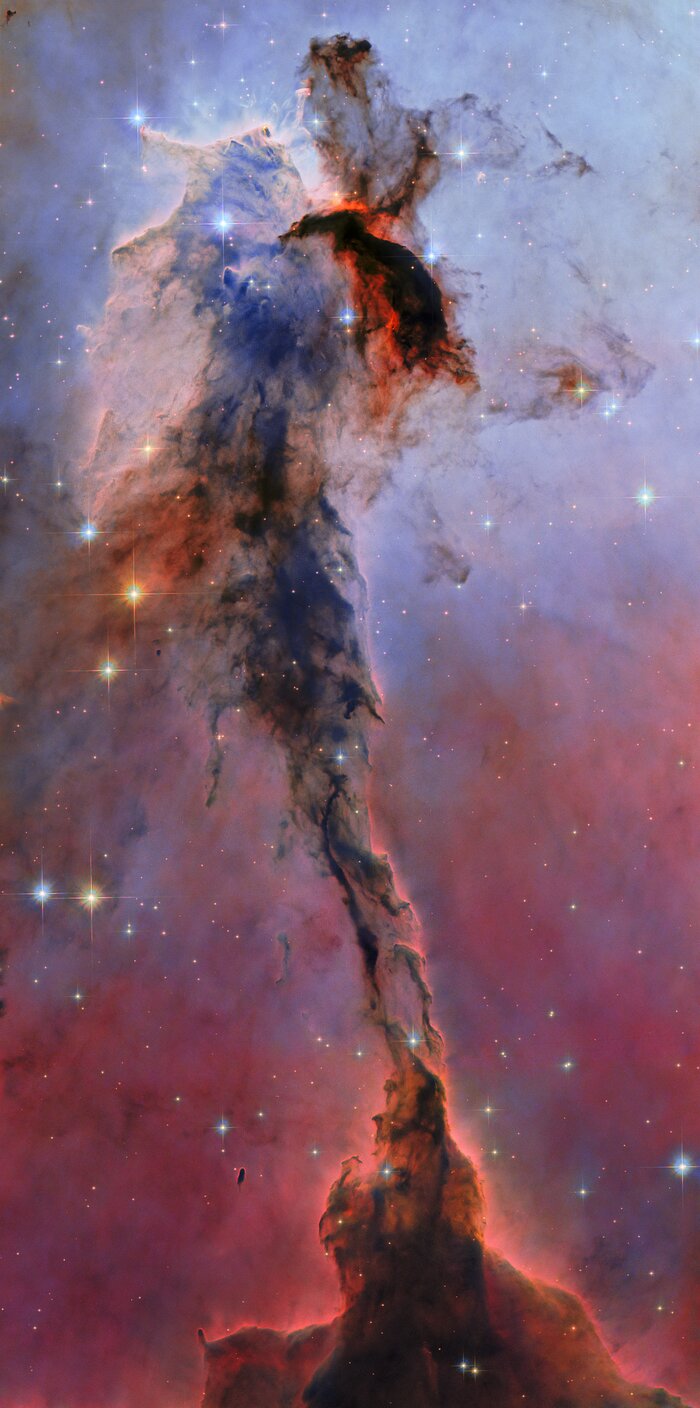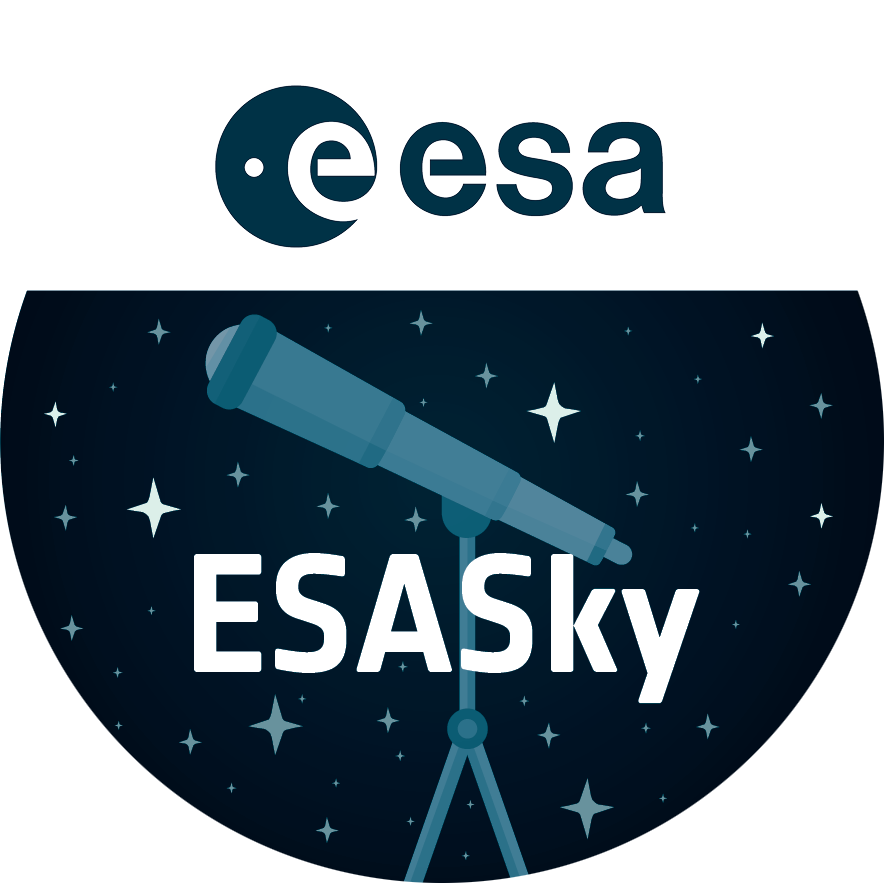Eagle Nebula
This towering structure of billowing gas and dark, obscuring dust might only be a small portion of the Eagle Nebula, but it is no less majestic in appearance for it. 9.5 light-years tall and 7000 light-years distant from Earth, this dusty sculpture is refreshed with the use of new processing techniques. The new Hubble image is part of ESA/Hubble’s 35th anniversary celebrations.
The cosmic cloud shown here is made of cold hydrogen gas, like the rest of the Eagle Nebula. In such regions of space new stars are born among the collapsing clouds. Hot, energetic and formed in great numbers, the stars unleash an onslaught of ultraviolet light and stellar winds that sculpt the gas clouds around them. This produces fantastical shapes like the narrow pillar with blossoming head that we see here. The material in the pillar is thick and opaque to light; it is highlighted at its edges by the glow of more distant gas behind it. The blue colours of the background are dominated by emission from ionised oxygen; the red colours lower down, glowing hydrogen. Orange colours indicate starlight that has managed to break through the dust: bluer wavelengths are blocked more easily by dust, leaving the redder light to pass through.
The stars responsible for carving this particular structure out of the stellar raw material lie just out of view, at the Eagle Nebula’s centre. As the pressure of their intense radiation batters and compresses the gas in this tower of clouds, it’s possible that further star formation is being ignited within. While the starry pillar has withstood these forces well so far, cutting an impressive shape against the background, eventually it will be totally eroded by the multitude of new stars that form in the Eagle Nebula.
[Image Description: A tall, thin structure of dark gas clouds. It is darker and broader at the base and broadens out again at the top, with spikes, fingers and wisps of gas protruding in all directions from its head. Some parts are illuminated, but most is dark, lit only at the edges from behind. A wall of colourful gas lies behind it, bluish at the top and redder towards the bottom. Several blue and gold stars are scattered across it.]
Credit:ESA/Hubble & NASA, K. Noll
About the Image
| Id: | heic2507a |
|---|---|
| Type: | Observation |
| Release date: | 18 April 2025, 16:00 |
| Related releases: | heic2507 |
| Size: | 3877 x 7800 px |
About the Object
| Name: | Eagle Nebula |
|---|---|
| Distance: | 7000 light years |
| Constellation: | Serpens Cauda |
| Category: | Anniversary Nebulae |
Image Formats
Wallpapers
Coordinates
| Position (RA): | 18 19 16.36 |
|---|---|
| Position (Dec): | -13° 45' 23.64" |
| Field of view: | 3.23 x 6.49 arcminutes |
| Orientation: | North is 96.9° left of vertical |
Colours & filters
| Band | Wavelength | Telescope |
|---|---|---|
| Optical B | 435 nm |
Hubble Space Telescope
ACS |
| Optical O III | 502 nm |
Hubble Space Telescope
ACS |
| Optical V | 555 nm |
Hubble Space Telescope
ACS |
| Optical I | 814 nm |
Hubble Space Telescope
ACS |
| Optical N II | 658 nm |
Hubble Space Telescope
ACS |


